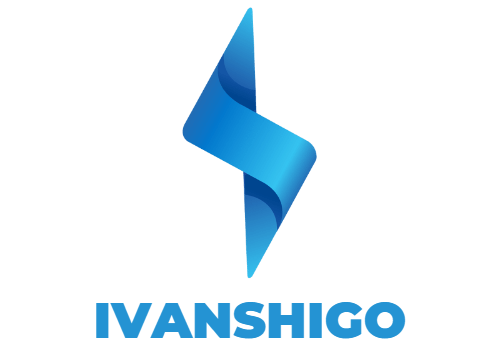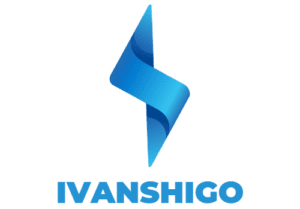On-Page SEO: Everything You Need to Know
Greetings, fellow explorer of the digital realm! You’ve just embarked on a journey that holds the potential to redefine your online presence. Buckle up, because we’re delving into the world of SEO – the secret sauce to making your website shine in the vast landscape of the internet. Our first stop: Keyword Research. Think of it as the compass that guides your website towards the right audience. Choosing the right keywords is akin to selecting the perfect path for your online success.
Next up, we have Content Optimization. Picture this as the masterstroke, where your content transforms into an enticing masterpiece, captivating both search engines and human readers alike. It’s about creating content that not only informs but engages and resonates.
Keyword Research
Keyword research is a crucial step in the world of online content. It helps you understand what words and phrases people use when searching for information on the internet. This knowledge is essential for creating content that reaches your target audience effectively.
Importance of Keyword Research
Keyword research is like a compass for your content. It guides you towards topics that are relevant and in-demand. By knowing what people are searching for, you can tailor your content to meet their needs, increasing the chances of it being found.
Types of Keywords (Short-tail, Long-tail, LSI)
- Short-tail Keywords: These are short, general terms that capture a broad topic. For example, “shoes” is a short-tail keyword.
- Long-tail Keywords: These are longer, more specific phrases. They often indicate a user is looking for detailed information. For example, “running shoes for flat feet” is a long-tail keyword.
- LSI (Latent Semantic Indexing) Keywords: These are related words or phrases that help search engines understand the context of your content. For instance, if your main keyword is “apple”, LSI keywords might include “fruit”, “orchard”, or “iPhone”.
Various tools and software are available to help you with keyword research. They provide insights into search volume, competition, and related keywords. Some popular tools include Google Keyword Planner, Ahrefs, and SEMrush.
Competitor Keyword Analysis
Analyzing what keywords your competitors are targeting can provide valuable insights. It helps you identify gaps in your own content strategy and discover new keyword opportunities.
Search Volume and Competition
Understanding the search volume (how many people are searching for a particular keyword) and competition (how many other websites are targeting the same keyword) is crucial. Balancing high search volume with manageable competition is the key to success.
Understanding User Intent
User intent refers to the reason behind a search query. It’s important to create content that aligns with what users are looking for. This improves the chances of your content being ranked highly by search engines.
Identifying Seasonal Keywords
Some keywords experience fluctuations in popularity throughout the year. Recognizing and targeting seasonal keywords can help you tap into trends and capture a larger audience during specific times.
Keyword Mapping and Clustering
This involves organizing your chosen keywords into groups or clusters. It helps in creating a structured content plan that covers all aspects of your chosen topic.
Emerging Keyword Trends
Keeping an eye on emerging trends allows you to stay ahead of the curve. It helps you create content that is fresh and relevant, attracting a wider audience.
Localized Keyword Optimization
If your content is targeting a specific location, it’s essential to include keywords that are relevant to that area. This ensures your content reaches the right audience.
Content Optimization
Once you have the right keywords, it’s crucial to optimize your content to make it user-friendly and search engine-friendly.
Creating High-Quality Content
High-quality content is informative, engaging, and provides value to the reader. It should be well-researched and well-written.
Content Relevance and User Value
Your content should directly address the needs and interests of your target audience. It should provide solutions or information they find valuable.
Keyword Placement and Frequency
Integrating your chosen keywords naturally into your content is important. However, overusing them can lead to keyword stuffing, which can harm your rankings.
Proper use of header tags (H1, H2, H3, etc.) helps organize your content and makes it easier for both readers and search engines to understand.
Image Optimization and Alt Text
Images are an important part of content. Optimizing them with descriptive alt text helps search engines understand the content of the image.
Outbound and Inbound Linking
Linking to reputable sources (outbound linking) and having other websites link to your content (inbound linking) can boost your content’s credibility and SEO performance.
Anchor Text Optimization
The text used for hyperlinks (anchor text) should be relevant to the content it’s linking to. It provides context to both users and search engines.
Mobile-Friendly Content
With the rise of mobile devices, ensuring your content is easily accessible and readable on various screen sizes is crucial for SEO.
Schema Markup for Content
Schema markup is a code that you can add to your content to help search engines provide more informative results for users. It can enhance your content’s visibility in search results.
Content Length and Readability
Balancing content length is important. It should be long enough to provide value but not so long that it becomes overwhelming for readers. Additionally, ensuring readability with clear language and formatting is key.
Meta tags and descriptions play a vital role in helping search engines understand and present your content to users. They provide important information about your web pages.
Title tags are like the headlines of your web pages. They should accurately describe the content and include relevant keywords to improve search engine visibility.
Meta descriptions provide a brief summary of your content in search results. They should be engaging and informative, enticing users to click through to your page.
Header tags (like H1, H2, etc.) help organize your content and signal its structure to search engines. They should be used appropriately to enhance readability and SEO.
These tags tell search engines how to crawl and index your pages. They’re important for controlling which pages are shown in search results.
Canonical Tags for Duplicate Content
When you have similar content on multiple pages, canonical tags help indicate the preferred version to search engines. This prevents duplicate content issues.
If your content is specific to a certain location, using geo-targeted meta tags helps search engines understand the geographic relevance of your content.
For content spread across multiple pages (like articles with multiple pages), pagination tags help search engines understand the sequence of pages.
These tags enhance how your content appears on social media platforms. They control the title, description, and image displayed when a link is shared.
Structured Data Markup
Structured data markup provides additional context to search engines about the content on your page. It can enhance how your page appears in search results.
For mobile users and apps, specific meta tags help optimize how content is presented. App deep linking allows users to open specific content within an app directly from search results.
URL Optimization
URLs are the web addresses that users and search engines use to find your content. Optimizing them helps improve user experience and search engine rankings.
URL Structure Best Practices
Clear, descriptive URLs are recommended. They should give users an idea of what to expect on the page.
Including Keywords in URLs
Incorporating relevant keywords into your URLs can provide a small SEO boost. However, it’s important to do this naturally and not force keywords.
Avoiding Special Characters in URLs
Using special characters or symbols in URLs can cause issues for search engines. It’s best to stick to letters, numbers, and hyphens.
Canonicalization and URL Versions
If you have multiple versions of a URL (like http and https), canonicalization helps indicate the preferred version to search engines.
URL Length and Readability
Shorter, easy-to-read URLs are preferred. They are more user-friendly and can potentially have a positive impact on SEO.
URL Parameters and Google Search Console
URL parameters can sometimes cause indexing issues. Using Google Search Console, you can control how Google treats URLs with parameters.
Creating SEO-Friendly Permalinks
Permalinks are permanent URLs to individual pages or posts. They should be simple, descriptive, and include relevant keywords.
Subfolder vs. Subdomain Strategy
Deciding whether to use subfolders (example.com/blog) or subdomains (blog.example.com) can impact your site’s overall SEO strategy.
HTTPS and Secure URLs
Having a secure website (using HTTPS) is important for both user trust and search engine rankings.
Avoiding URL Redirect Chains
Having multiple redirects from one URL to another can slow down page loading times and potentially impact SEO. It’s best to keep redirects to a minimum.
Image Optimization
Optimizing images is crucial for improving website performance and enhancing user experience. It involves several techniques to ensure images are both visually appealing and load quickly.
Different image formats serve different purposes. JPEG is best for photographs, PNG for images with transparency, and GIF for simple graphics or animations.
Resizing and Compression for Web
Large, high-resolution images can slow down a website. Resizing and compressing images reduces file size without sacrificing quality.
Alt Text and Descriptions
Alt text provides a textual description of an image for users who can’t see it. It’s also important for SEO, as search engines use it to understand the content of the image.
Image File Names and SEO
Giving images descriptive file names (instead of generic ones like “IMG123.jpg”) can help search engines understand the content of the image.
Lazy loading is a technique that delays the loading of images until the user scrolls down to where the image is located. This helps improve page load times.
Image Sitemaps and Indexation
Including images in your sitemap helps search engines discover and index them, improving their visibility in image search results.
CDN Integration for Images
Content Delivery Networks (CDNs) store copies of your images on servers around the world, reducing the distance and time it takes for them to load for users.
Mobile Responsive Images
Providing different image sizes for different screen sizes ensures that images display correctly and load quickly on mobile devices.
Avoiding Copyright Issues with Images
Using images without proper permission or licensing can lead to legal issues. It’s important to use images that are either in the public domain or have the appropriate licenses.
Using SVGs for Scalable Graphics
Scalable Vector Graphics (SVGs) are ideal for logos and icons because they can be scaled to any size without losing quality.
Internal Linking
Internal linking connects pages within your website. It’s an important aspect of SEO and user navigation.
Anchor Text Optimization for Internal Links
The text used for internal links (anchor text) should be descriptive and relevant to the content it’s linking to.
Creating a Hierarchical Site Structure
Organizing your website into a clear hierarchy makes it easier for users and search engines to navigate.
Utilizing Breadcrumbs for Navigation
Breadcrumbs provide a trail of links that show the user’s path through the site, making it easier to understand their location.
Contextual Linking within Content
Linking to related content within your articles or pages helps users find more relevant information and improves SEO.
Utilizing Related Posts/Products
Displaying related posts or products at the end of a page encourages users to explore more of your content.
HTML and XML Sitemaps
Both HTML and XML sitemaps help search engines understand the structure of your website, including internal links.
If you have content spread across multiple pages (like a blog), pagination links help users and search engines navigate through them.
Nofollow and Dofollow Internal Links
You can control how search engines follow and pass authority through links by using nofollow and dofollow attributes.
Monitoring Broken Internal Links
Broken links can harm user experience and SEO. Regularly checking for and fixing broken links is important for website health.
Linking to Deep Pages for Indexation
Ensuring that deep pages within your website (not just the homepage) are linked to helps search engines discover and index them.
External Linking
External linking is a fundamental component of search engine optimization (SEO) that involves creating connections between your website and other relevant sites on the internet. These links, also known as backlinks, serve as pathways between online resources, signifying to search engines the relevance and authority of your content. A well-curated external linking strategy can significantly impact your site’s visibility, credibility, and overall SEO performance.
Quality vs. Quantity in External Links
One of the cardinal principles in external linking is prioritizing quality over quantity. While having a multitude of external links might seem beneficial, it’s far more advantageous to focus on establishing connections with reputable and authoritative sources within your industry or niche. These high-quality backlinks not only enhance your site’s credibility in the eyes of search engines but also provide valuable context to your content.
Nofollow and Dofollow Attributes
The distinction between nofollow and dofollow attributes in external links is of paramount importance in SEO. A nofollow attribute signals search engines not to pass authority through the link, making it invaluable for preventing the dilution of your site’s link equity. On the other hand, dofollow links contribute to your site’s authority and can positively impact your rankings.
Relevance and Authority of External Sites
The relevance and authority of the external sites you choose to link to significantly influence the perceived value of your content. Linking to websites that are closely related to your topic not only provides additional context for search engines but also offers users a seamless browsing experience. Furthermore, linking to authoritative sources establishes your site as a hub of reliable information within your niche.
Natural Link Building Strategies
Natural link building is the practice of acquiring backlinks organically, without resorting to manipulative tactics. This involves creating high-quality, engaging content that naturally attracts links from other websites. It also encompasses relationship-building within your industry, leading to collaborative opportunities and organic backlink growth.
Monitoring and Disavowing Bad Backlinks
Regularly scrutinizing your site’s backlink profile is essential for maintaining a healthy link profile. Identifying low-quality or spammy backlinks and promptly disavowing them through tools like Google’s Disavow Links tool helps prevent negative impacts on your site’s SEO.
Avoiding Link Farms and PBNs
Link farms and Private Blog Networks (PBNs) are considered black-hat SEO techniques and should be avoided at all costs. Engaging in such practices can lead to severe penalties from search engines, severely undermining your site’s credibility and visibility.
While social media links do not directly contribute to your site’s SEO rankings, they play a crucial role in driving traffic and increasing brand visibility. Engaging social media content can lead to natural backlinks from users who find your content valuable.
Guest Blogging for Backlinks
Guest blogging on reputable sites within your industry can be an effective method of acquiring high-quality backlinks. However, it’s crucial to prioritize providing valuable, informative content rather than focusing solely on link-building.
Building Relationships for Outreach
Cultivating relationships with other website owners, influencers, and thought leaders in your industry can lead to natural link-building opportunities. Outreach efforts can result in collaborations, interviews, and guest posting opportunities that contribute to your backlink profile.
Monitoring and Analyzing Link Profile
Regularly analyzing your site’s link profile enables you to identify trends, opportunities, and potential issues. Tools and platforms designed for backlink analysis provide valuable insights that inform your ongoing link-building efforts. This proactive approach ensures that your external linking strategy remains dynamic and effective.
Mobile Optimization
Mobile optimization is a pivotal aspect of modern website development and SEO. With the proliferation of mobile devices, ensuring that your website is tailored to provide an exceptional user experience on smartphones and tablets is imperative for both user satisfaction and search engine rankings.
Responsive Design and Mobile-Friendly Testing
At the core of mobile optimization lies responsive design. This approach entails creating a website that adapts seamlessly to various screen sizes and resolutions. It ensures that users on different devices have access to a consistent and user-friendly interface. Rigorous mobile-friendly testing, often facilitated by tools like Google’s Mobile-Friendly Test, verifies that your site functions seamlessly across a spectrum of mobile devices.
Accelerated Mobile Pages (AMP)
Accelerated Mobile Pages (AMP) is an open-source initiative aimed at accelerating the loading speed of web pages on mobile devices. By utilizing simplified HTML and streamlined CSS, AMP enhances the performance of your content, providing users with lightning-fast loading times.
Mobile Page Speed and Performance
In the mobile-centric digital landscape, page speed is paramount. Mobile users demand swift access to content, and search engines prioritize fast-loading pages in their rankings. To optimize mobile page speed, techniques such as image compression, code minification, and server optimizations are employed to reduce loading times.
Mobile-First Indexing Considerations
With the advent of mobile-first indexing, search engines primarily use the mobile version of a site’s content for ranking and indexing. Ensuring that your mobile site mirrors the depth and quality of your desktop version is crucial for maintaining optimal SEO performance.
App Indexing and Deep Linking
For websites with accompanying mobile apps, app indexing enables content within the app to be indexed and displayed in search results. Deep linking directs users to specific content within the app, enhancing user engagement and providing a seamless transition between web and app experiences.
Mobile-Specific Content Considerations
Tailoring content for mobile users involves considerations such as font size, button placement, and overall layout. Ensuring that content is easily digestible and accessible on smaller screens enhances the user experience.
Avoiding Common Mobile SEO Mistakes
Mistakes in mobile optimization can be detrimental to user experience and SEO performance. Common errors include intrusive pop-ups, faulty redirects, and unplayable content. Addressing these issues is essential for a seamless mobile experience.
Local SEO for Mobile
Local SEO for mobile devices is critical for businesses with physical locations. Optimizing for local search ensures that users searching for nearby products or services find relevant, location-based results.
Mobile User Experience (UX) and SEO
A positive mobile user experience goes beyond page speed and responsive design. It encompasses intuitive navigation, clear calls-to-action, and seamless interactions, all of which contribute to user satisfaction and indirectly impact SEO performance.
Testing and Optimization for Mobile Devices
Regularly testing your website on a variety of mobile devices and operating systems is essential to identify and rectify any issues that may arise. Conducting user testing and soliciting feedback ensures that your mobile optimization efforts result in a user experience that is both intuitive and effective.
Incorporating these comprehensive strategies for external linking and mobile optimization into your SEO endeavors will not only enhance your site’s visibility and credibility but also contribute to a seamless, user-friendly experience for visitors across all devices. Remember, SEO is a dynamic field, so staying updated with the latest trends and technologies is crucial for long-term success.
User Experience and Engagement
User experience (UX) and engagement are pivotal aspects of a website’s success. They encompass a wide range of elements that collectively influence how visitors interact with and perceive your site.
Page Load Speed and Performance
A swift-loading website is fundamental for retaining visitors’ attention. Ensuring that pages load quickly and efficiently contributes to a positive user experience.
Clear and Intuitive Navigation
Intuitive navigation is crucial for helping users find the information they seek. Well-structured menus and easy-to-follow links enhance user satisfaction and reduce frustration.
Engaging and Readable Content
Compelling, well-written content captures the reader’s interest and encourages them to stay on your site. Ensuring readability through appropriate fonts, colors, and formatting further enhances the user experience.
Mobile Responsiveness and Usability
A mobile-friendly design guarantees that your website functions seamlessly on various devices. This inclusivity ensures that mobile users have the same exceptional experience as desktop users.
Incorporating interactive elements like forms, quizzes, and multimedia such as videos and infographics, adds depth and engagement to your content, keeping users involved and interested.
Call-to-Action Optimization
Effectively placed and compelling calls-to-action guide users towards desired actions, whether it’s making a purchase, subscribing, or navigating to another page.
Social Proof and Trust Signals
Displaying testimonials, reviews, or certifications builds trust and credibility with your audience, fostering a sense of confidence in your brand.
Minimizing Pop-ups and Intrusive Elements
While pop-ups and similar elements can be effective, overuse or poorly timed displays can detract from the user experience. They should be employed judiciously to avoid irritating visitors.
Accessibility and Inclusivity Considerations
Ensuring that your website is accessible to individuals with disabilities is not only a legal requirement but also a crucial aspect of providing an inclusive and user-friendly experience for all.
Analyzing User Behavior and Metrics
Utilizing tools like Google Analytics allows you to gain insights into how users interact with your site. Analyzing metrics such as session duration, bounce rate, and behavior flow aids in refining the user experience.
Analyzing the performance of your website and its impact on SEO is essential for making informed decisions and optimizing for better results.
Setting Up Google Analytics for SEO Tracking
Google Analytics is a powerful tool that provides a wealth of data about your website’s performance. Properly configuring it ensures you can accurately track and measure key SEO metrics.
Monitoring Organic Search Traffic
Keeping a close eye on organic search traffic provides valuable insights into how users find and interact with your site through search engine results.
Tracking Keyword Rankings
Monitoring the rankings of your target keywords enables you to assess the effectiveness of your SEO efforts and make adjustments as needed.
Analyzing Click-Through Rates (CTR)
Understanding CTR helps gauge the effectiveness of your meta titles and descriptions in enticing users to click through to your content from search results.
Assessing Bounce Rates and Dwell Time
Bounce rate and dwell time offer insights into how engaging and relevant your content is to visitors. Lowering bounce rates and increasing dwell time can improve SEO performance.
Conversion Tracking and Goal Setting
Setting up conversion tracking allows you to measure specific actions users take on your site, such as making a purchase or filling out a contact form. This information is invaluable for optimizing your site for conversions.
A/B testing involves comparing two versions of a webpage to determine which one performs better. This method can be applied to various elements, such as headlines, call-to-action buttons, and layout, to enhance SEO performance.
Regularly assessing site speed and performance metrics helps identify areas for improvement, ensuring that your website consistently delivers a fast and reliable user experience.
Heatmaps provide visual representations of user interactions with your site. User recording tools offer actual recordings of user sessions, allowing you to observe how visitors navigate your website.
SEO Reporting and Data Interpretation
Effectively reporting and interpreting SEO data enables you to make informed decisions about your optimization efforts. Clear reporting ensures that progress is tracked and improvements are implemented where needed.
Incorporating these extensive strategies for user experience, engagement, analytics, and performance tracking into your SEO endeavors will not only enhance your site’s visibility but also foster a positive, engaging, and informative experience for all visitors. Remember, SEO is a continuous process, and staying abreast of emerging trends and technologies is vital for sustained success.
Summary
As we draw the curtains on this enlightening journey, pat yourself on the back. You’ve just empowered your website with the knowledge and strategies that SEO experts swear by. Each step, from Keyword Research to Analytics, is a piece of a grand puzzle, meticulously crafted to elevate your online presence.
Remember, SEO isn’t just about appeasing algorithms; it’s about providing value to real people. So, keep honing your skills, keep refining your content, and watch as your website scales new heights in the digital landscape. You’ve now equipped yourself with the tools of a seasoned SEO professional. Onward to success!





